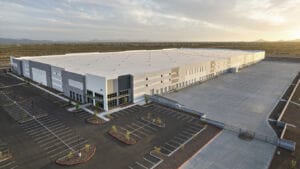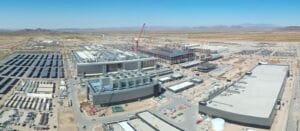The apartment industry emerged as one of the strongest sectors coming out of the Great Recession, and a new study shows just how much the Phoenix economy benefited from the rental boom. In 2013 – the latest numbers available – apartment construction, operations and resident spending contributed $9.9 billion locally and supported 99,900 jobs in the metro area.
The economic data are part of new research commissioned by the National Multifamily Housing Council (NMHC) and the National Apartment Association (NAA), which looks at dollars and jobs from apartment construction, operations and resident spending, nationally, by state and in 40 specific metro areas, including Phoenix. The data, based on research by economist Stephen S. Fuller, Ph.D., of George Mason University’s Center for Regional Analysis, are available on the website www.WeAreApartments.org.
Nationally, the apartment industry and its 36 million residents contributed an impressive $1.3 trillion to the U.S. economy, supporting 12.3 million jobs across the U.S. in 2013.
The study showed that in the Phoenix metro area:
• The local economic contribution from the apartment industry totaled $9.9 billion, supporting 99,900 jobs.
• The economic contribution of local apartment construction totaled $1.4 billion.
• The economic contribution of local apartment operations totaled $1.7 billion.
• Apartment construction and operations supported $1.1 billion in personal earnings for local workers.
• Renter spending in the Phoenix metro area contributed $6.9 billion to the local economy.
• The total economic contribution of the apartment industry and its residents in Arizona totaled $13.1 billion and supported more than 131,700 jobs.
“Job growth in Phoenix is on the rise, increasing demand for apartments. As a result, apartment construction levels are elevated in the area, especially in Phoenix’s higher-end north and east side neighborhoods where new apartments are most needed. Our city’s east side, in particular, generates tremendous apartment demand due to its proximity to Arizona State University and its accessibility to nearby employment areas,” said Tom Simplot, President & CEO of the Arizona Multihousing Association. “The rental boon – both locally and nationally – has been fueled by demographic changes like the growing Millennial population and a rediscovery of metropolitan urban cores.”
“Here in Phoenix, we’re feeling the positive economic impact of the booming apartment industry, which is helping our city thrive,” Simplot explained. “The great news about the apartment industry is that the dollars and jobs don’t end with construction. The ongoing operations and resident spending make each apartment community an economic engine, supporting local jobs and making a positive economic impact in our area – and in towns across the country.”
“Our study showed major increases around apartment construction, with construction spending, economic contributions and personal earnings all rising substantially,” said Fuller. “The construction for multifamily apartment buildings is a significant and growing source of economic activity, jobs and personal earnings in communities nationwide.”
“According to our study findings, apartment construction has been on the rise over the past five years. In 2009, during the economic recession, there were only 97,000 construction starts, which was the lowest level since records began in 1964. In comparison, there were 294,000 construction starts in 2013 – a significant increase,” said NAA Chairman Tom Beaton, Senior Vice President, Management, The Dolben Co.
“The most visible sign of the rental resurgence – apartment construction – is on the rise, contributing $93 billion to the national economy in 2013, resulting in $30 billion going directly into the paychecks of more than 700,000 workers,” said NMHC Chairman Daryl Carter, CEO of Avanath Capital Management. “Besides all the dollars and jobs, the increase of available apartments will also help address affordability challenges that we see in many markets across the U.S.”
In conjunction with the study’s release, the website www.WeAreApartments.org breaks down the data by each state and 40 key metro areas. Visitors can also use the Apartment Community Estimator – or ACE – a tool that allows users to enter the number of apartment homes of an existing or proposed community to determine the potential economic impact within a particular state or metro area.
For more information, visit www.WeAreApartments.org/metro/Phoenix.
The Arizona Multihousing Association is the statewide trade association for the apartment industry in Arizona, providing education and advocacy for ethical and fair housing.
The Arizona Multihousing Association is the statewide trade association for the apartment industry in Arizona, providing education and advocacy for ethical and fair housing.




